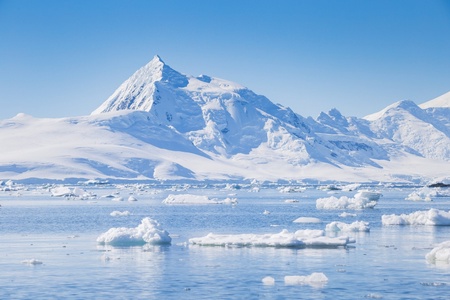The period in geologic history when Earth last had no glaciers has been pushed back by at least 26 million years, almost to the time of the dinosaurs.
A team of scientists including those from the University of Aberdeen made the discovery while investigating glaciation in the Transantarctic Mountains, a 3500 km mountain chain that extends across Antarctica but is largely buried under ice.
Using satellite images, they analysed tens of thousands of glacial landforms known as glacial cirques (or corries) – large glacially eroded bowl-shaped hollows – and combined this with their understanding of the climate conditions required for glaciers to form.
In doing so, they found that glaciers existed in the highest mountains of Antarctica at least 60 million years ago. This is far earlier than reported by previous studies, which suggested that mountain glaciers first appeared immediately before the formation of the first ice sheet 34 million years ago.
Professors Matteo Spagnolo and Brice Rea, from the University of Aberdeen’s School of Geosciences, were among the co-authors of the study which was led by Dr Iestyn Barr from Manchester Metropolitan University. It has been published in Nature Communications
Professor Spagnolo commented: “The key finding of our research is that mountain glaciers were likely already present in Antarctica some 60 million years ago, just after the extinction of dinosaurs.
“This is a time when Antarctica was already in its current polar position, but the climate was up to 20°C warmer than present with sub-tropical forests covering most of the continent, and glaciers developing in the highest peaks of the Transantarctic Mountains - drastically different to the present-day endless expanse of ice!
“As the climate cooled, Earth moved from a ‘greenhouse’ into an ‘icehouse’ which eventually led to the growth of Antarctica’s ice sheets that now bury most of the Transantarctic Mountains, which was the key focus of our research.”
Professor Rea continued: “At the time, those were possibly the only glaciers on Earth and were likely present until the Oligocene, 34 million years ago, when they were buried by the growth of larger ice masses which eventually became an ice sheet.
“It is possible that some mountain glaciers were again present during the Miocene Climatic Optimum warming some 15 million years ago, before the widespread switch to the ice sheet glaciation that we see today.”
Dr Barr added: “By using satellite images to painstakingly study the glacial cirques which formed early in the glaciation, we have managed to fill in existing gaps in our knowledge and reveal a new understanding of when mountain glaciers first appeared in Antarctica.”


